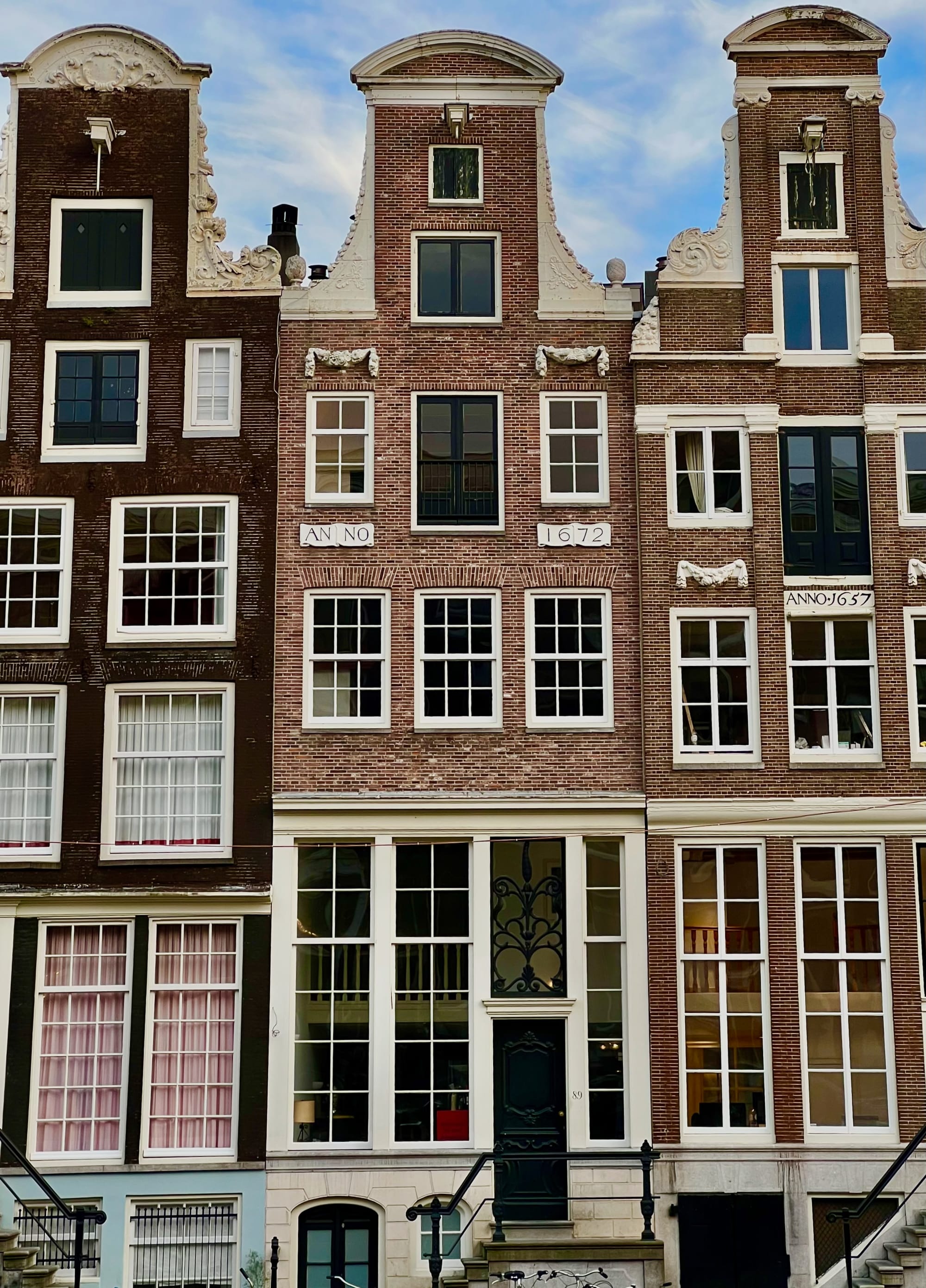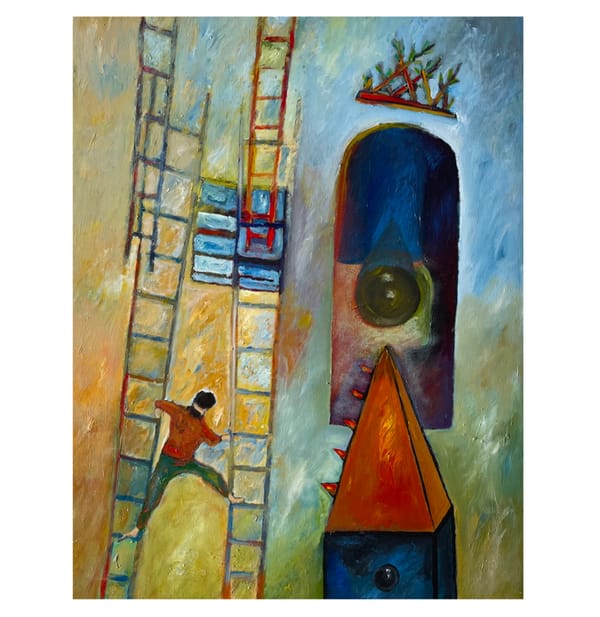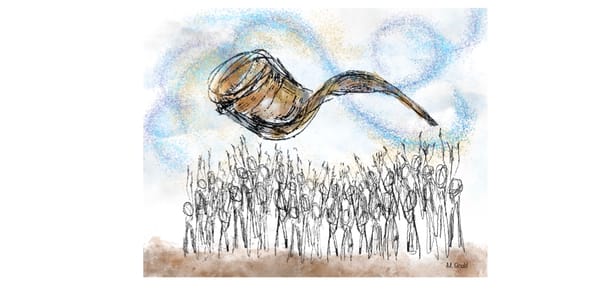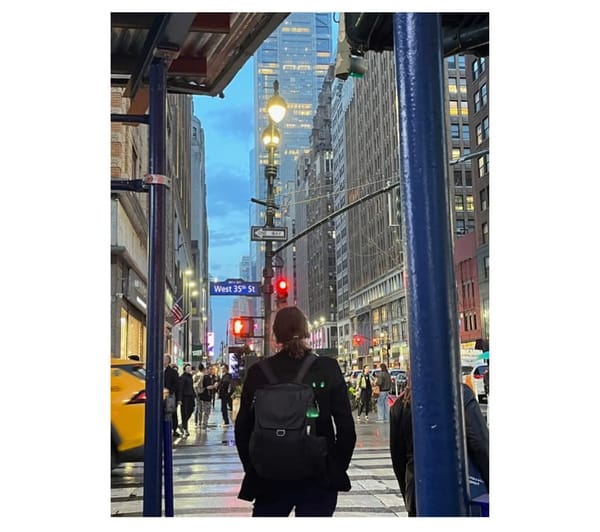Hidden In Plain Sight, Amsterdam

Story and Photos by Lena S. Keslin
Just the name Amsterdam conjures up images of a quaint city with its picturesque canals and bridges. Each of the 17th century Dutch colonial homes is different from the next as they line the canals. There are narrow cobblestone streets with more bicycles than cars, and boat tours where there is a close-up view of houseboats and a unique view of the stunning architecture and the city. A few of our favorite sites are the Rijksmuseum, the Van Gogh Museum, Rembrandt House Museum, the Anne Frank House and the magnificent Portuguese Synagogue. However, beneath the surface of this unique city, I experienced another side of Amsterdam. As a Jewish traveler I am always conscious of my people’s history. In Amsterdam it hit me hard.

On our recent visit in May we chose a hotel that we’ve stayed at before. It was around the corner from the Anne Frank House. As we were being shown to our room first we took a tiny elevator and then we walked up 20 steps that curved around and around till we reached the top floor. We learned from the young man escorting us that twenty Jews had been hidden somewhere up on that floor. He said they survived. From that moment on I became much more aware of my surroundings. As I looked around our beautifully curated room with vaulted ceilings and narrow windows that looked out on the Keizersgracht canal, my thoughts were filled with the unimaginable number of lost lives.

The Anne Frank House estimates that there were 107,000 Dutch Jews deported to various concentration camps. 102,000 were murdered by the Nazis and 5,200 survived. The Netherlands had the highest percentage of murdered Jews of any Western European country. Although the Anne Frank House opened to the public in 1960 it is now a much larger museum and educational center located on the beautiful Prinsengracht canal. My memory of being there in 1973 has always stayed with me. I remember seeing the wooden bookcase filled with legal binders and above it a world map and the floral wallpaper decorating the walls all faded by time. I experienced the gripping feeling of fear and hesitancy as I made my way up the stairs through the opened bookcase. The same bookcase that had opened to the hidden annex where eight people including the Frank family were hidden for 761 days before being discovered by the Gestapo. I had an ominous feeling of fear again as I made my way through that hidden doorway. It was still shocking how one’s life, one’s freedom, everything cut off so abruptly by the opening and closing of a bookcase.

We were in Amsterdam to visit my old friend from New York. She had been born in Poland after the war to Jewish parents that had both been hidden. While traveling years ago she met a handsome Dutchman, they married and continue to live in Amsterdam, the city of his birth.
The day after our visit to the Anne Frank House my friend's husband wanted to show us where he had lived as a child. It was a red brick building so close to where the Frank family had been hidden. Both the Frank family annex and our friend’s apartment are a block away but in opposite directions from the former Gestapo Headquarters in Amsterdam.

We continued on our picturesque canal walk and all of a sudden I was painfully aware of the brass plaques I kept seeing set into the cobblestones. They are called Stolpersteine or stumbling stones. There can be a single one or two or three engraved with the names of the former owners or those who had occupied the home. Their name, year of their birth and the year of their death and the death camp where they perished were displayed on the plaque. We’d seen them before in our travels but never so many one after the other, each one in front of an elegant beautiful building, so lovingly cared for with blue hydrangeas or purple wisteria and red roses cascading down from a window.

We went inside one house that is now an art center. I asked the young man at the front desk if Carolina van Goor, whose name was on the plaque outside, had been the former owner and his answer was,”Yes, but that was a long time ago.” I had noticed that there was a sign for a hidden cafe and now with the knowledge that this was once a Jewish home it intrigued me even more. It was magnificent with carved ceilings and huge crystal chandeliers and a white spiral staircase that elegantly wove its way to the upper floors.

We made our way to the cafe and found a spot in the lush garden with a pool and columns protectively surrounded by other houses on all sides. We drank our coffee and watched as our friend lit his very old pipe, he reminded me of a distinguished captain of a ship. Suddenly, the light in his lively blue eyes became lost in childhood memories. He had been born during the war in 1941. Slowly he shared with us that his parents had hidden a dear Jewish friend of theirs, an antique collector. Our friend was never permitted to speak about his family secret. He confessed that he was haunted for many years by his childhood memories.

As we sat so comfortably in that lush and serene garden that had once been a Jewish home, it felt so safe with the storybook gabled buildings all in a neat row. I reflected on how perfect it all was and the sadness and horrors that lay beneath the surface.

As has happened before, the ghosts of the past seem to be asking me to look deeper. Lurking below the surface is an undercurrent of the lives that had existed before and their memory still floats in the air and in the softness of a breeze.

Lena S. Keslin is an artist and writer in Santa Fe.
Photos Copyright © 2024 Lena S. Keslin. All Rights Reserved.
Return to HOME or Table of Contents
Community Supporter Advertisers of the NM Jewish Journal:
Jewish Community Foundation of New Mexico
Congregation Albert
Temple Beth Shalom
Jewish Community Center of Greater Albuquerque
The Institute for Tolerance Studies
Shabbat with Friends: Recapturing Together the Joy of Shabbat
Jewish Federation of El Paso and Las Cruces
Congregation B'nai Israel



